- Home
- Chiminea Guide
- Clay Chiminea
Clay Chiminea
This post may contain affiliate links so I earn a commission.
A clay chiminea is a wonderful way to elevate your outdoor sitting area while still maintaining a natural look.
Is your yard too small for a bonfire, but you want to spend cool evenings outdoor by a fire?
A chiminea could be the perfect addition.
You can find chimineas made from all sorts of materials, including cast iron and cast aluminum. However, traditional chimineas were made from clay.
The first chimineas were created in Mexico hundreds of years ago. They were typically used for cooking and baking or warming the family home, like a fireplace.
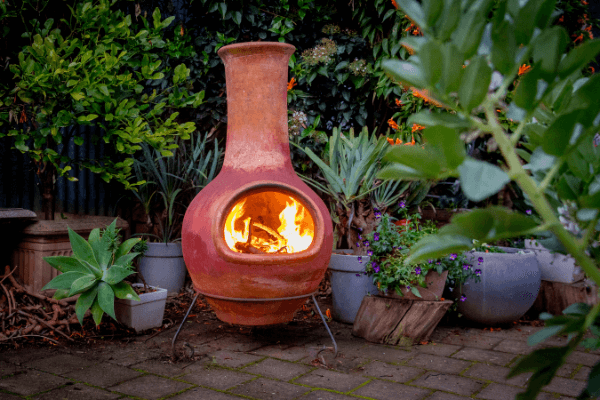
Chimineas were made from the abundant natural clay found in the region.
The traditional chiminea is constructed in two pieces.
The bottom or "bowl" where the fire is placed and the chimney or "neck."
After the two pieces are constructed, they are allowed to dry, and then they are fused together to make one piece.
Because clay can be brittle, these chimineas tended to crack and break easily. But fixing a crack was easy in those days.
All they had to do was grab some clay from a nearby stream and presto! Good as new!
Choosing A Clay Chiminea
When you’re purchasing a new clay chiminea, pay attention to the form it comes in.
A chiminea will typically come in two different forms: kiln dried (treated) or air dried (untreated).
Kiln dried chimineas are usually pre-painted and sealed. These are essentially ready for use.
All you need to do is prepare the chiminea for its first fire and enjoy.
Kiln dried clay chimineas come in a variety of colors, so you can be sure that your chiminea will fit perfectly with the environment you have created.
You can even find clay chimineas that have not been painted, only sealed.
This way, you will keep the natural clay visible for a more earthy look.
If you enjoy doing projects around your home, an air dried chiminea may be right for you.
The air dried chimineas will need to be painted and/or sealed before use.
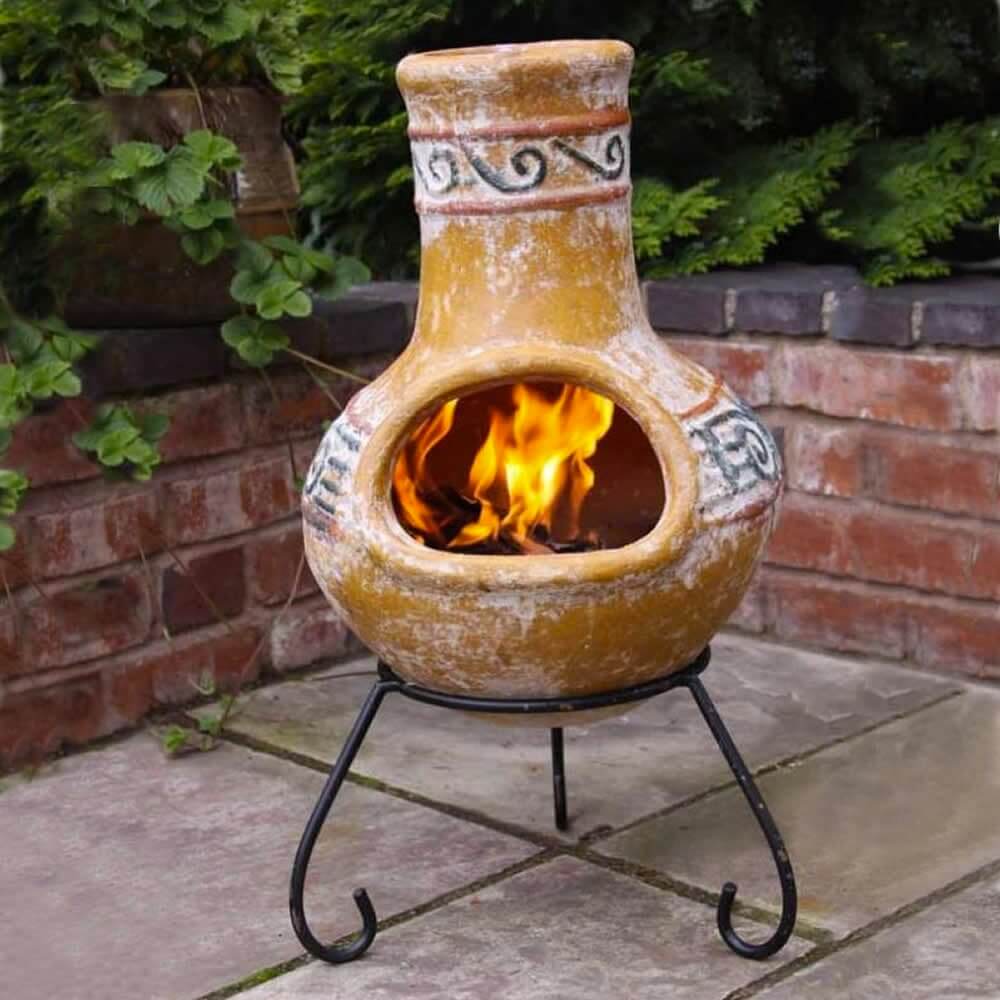
This allows freedom of choice in the color and texture of your chiminea. However, it does require more work.
If you don’t want to wait to enjoy a fire in your chiminea, you should make sure that you purchase a kiln dried clay chiminea.
If you’re looking for a new creative project, try your hand at painting and sealing the chiminea on your own.
You will be able to look on with pride as you enjoy the warmth of your clay chiminea.
Clay chimineas are lighter than a cast iron or cast aluminum model. This makes them easy to move and transport.
However, there are some tips you need to remember when moving one.
Clay is much more fragile than iron and aluminum, so you must take special care to keep this beautiful outdoor fireplace in optimal condition.
Because they are constructed in two separate pieces, the seam between them is a weak point.
The best way to move a traditional chiminea is to put your hand on the lip, or opening of the bowl, and cradle the neck with your other arm.
Doing so takes the pressure off the seam and keeps your clay chiminea intact.
Setting Up And Seasoning Your Chiminea
When you receive your chiminea, be sure to read the manual that comes with it.
Depending on the specifics of the particular chiminea you purchased, there may be differences in how to best care for it.
Your chiminea should come with setup instructions from the manufacturer.
Following these instructions is important and recommended.
Without paying attention to these, the lifespan of your chiminea will significantly decrease.
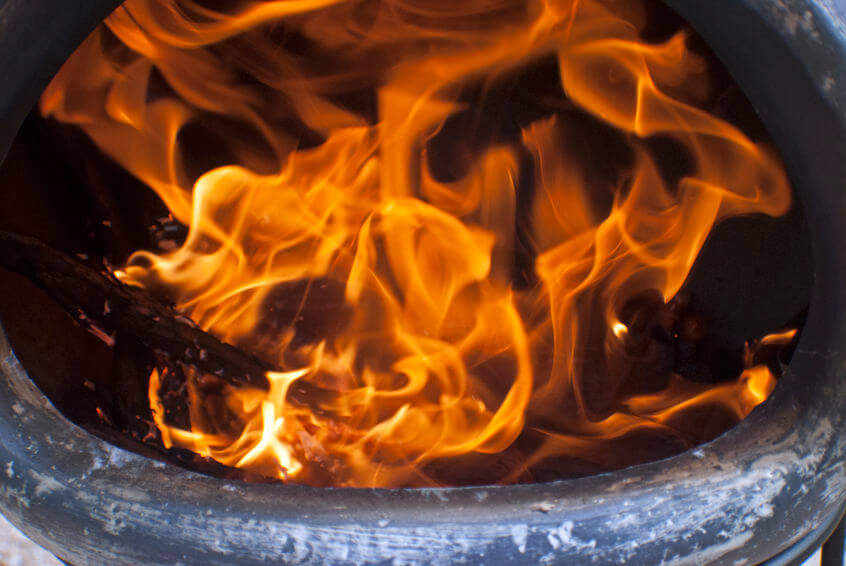
After you have chosen the perfect spot on your deck or in your yard for your beautiful clay chiminea, you’re ready to season your chiminea.
Seasoning strengthens the chiminea and allows it to cure, which extends the life and makes the chiminea more durable.
The first step is insulating the bowl of the chiminea.
To do so, place about 3 or 4 inches of sand or pea gravel in the bottom of the bowl. This prevents the fire or logs from resting directly against the base.
If there is too much direct contact, the clay can weaken, which could cause it to crack.
The next step is optional but recommended.
You can choose to add a grate or bricks inside the base to elevate the wood.
By doing this, you are letting the fire receive increased airflow for proper burning.
If the wood is too far below the mouth of the chiminea, it will be more difficult for the flames to come into contact with oxygen, which is necessary for a lasting fire.
You're Now Ready to Start a Fire In Your Chiminea!
Now that your chiminea is fully set up, you can light your first fire.
But before you can experience the full effects of a chiminea, you need to start slow with small fires.
It's recommended that you start 5 to 10 small fires to season your chiminea.
Seasoned firewood and newspaper work well to start your fire.
You need to understand how to start and extinguish your fires properly and safely.
For safety reasons, never use chemicals, gas, or lighter fluid to start the fire. Not only is it dangerous, but the clay will absorb these chemicals.
This will cause the chemicals to affect other fires you light in the future.
It's important to let the fire burn out completely.
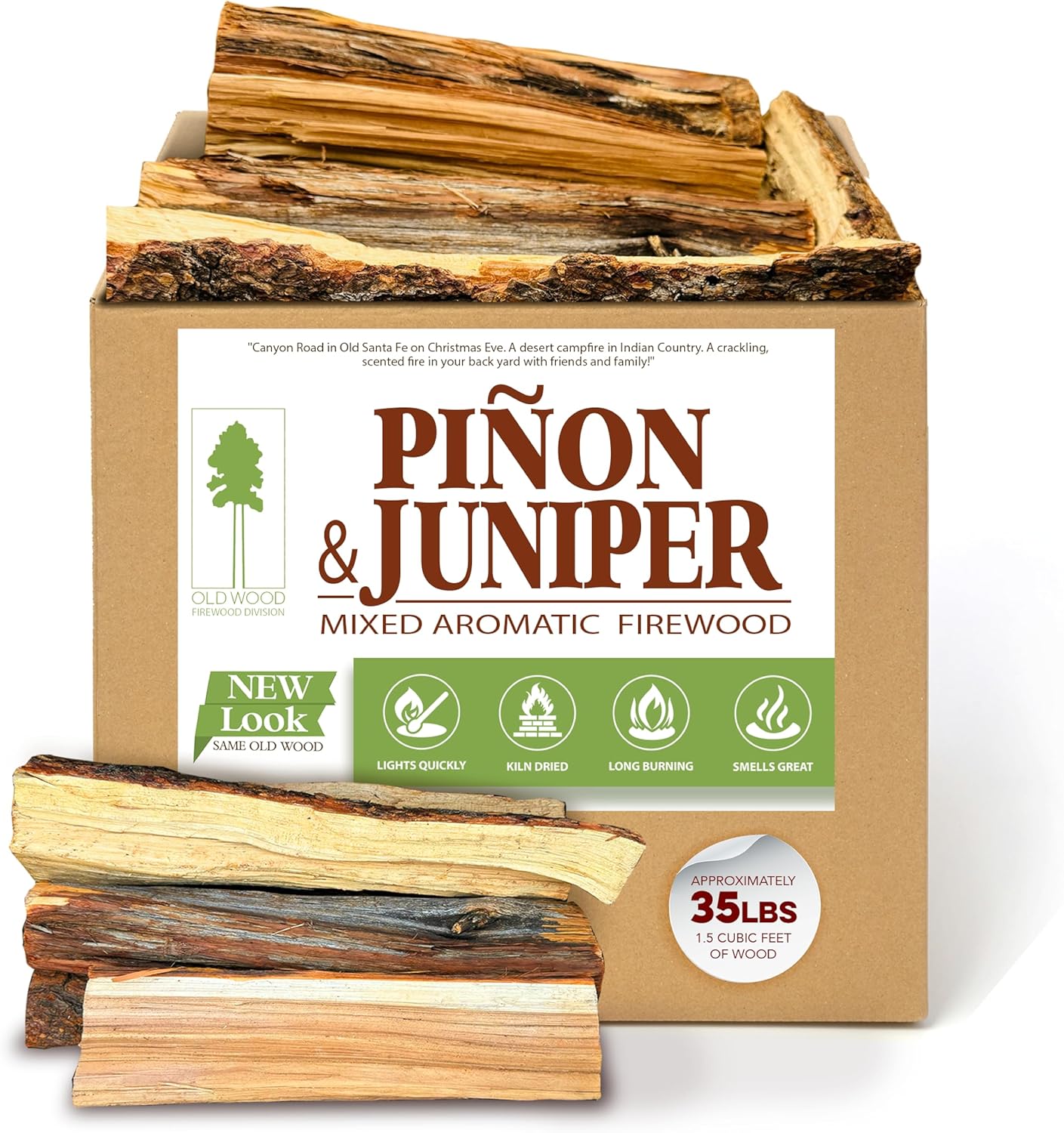
You should never use
water to put out a fire in
your chiminea. Throwing
water on a hot chiminea will most likely cause it to crack.
Things made from clay can’t handle abrupt changes in temperature. The clay will become unstable and crack at any weak point.
Once you have seasoned your chiminea, you're now ready for a slightly bigger fire.
Remember, because chimineas are fairly small, they are only designed for medium to small fires.
All flames should be contained within the chiminea.
If the flames are coming out the mouth or out the top of the neck, the fire is too big.
If you’re unsure of how much firewood to use in your chiminea, error on the side of caution and avoid large fires. These can be a safety hazard.
Maintenance And Storage
The clay style chimineas require more maintenance and need to be handled much more carefully than a cast iron or cast aluminum chiminea.
Because of the clay and water construction, they should not be continuously exposed to rain and snow.
The direct moisture will seep into the clay and cause it to weaken.
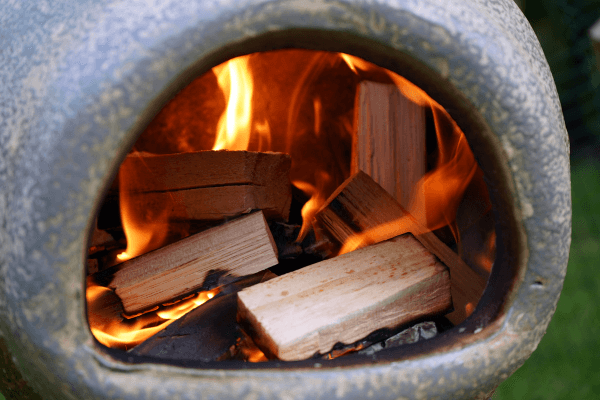
Constant exposure will only increase the odds of your
chiminea cracking.
Clay will absorb water, causing it to expand, but moisture isn’t the only threat to your chiminea.
Clay will also dry out in the direct sunlight, causing it to shrink. Some shrinking and expansion are normal, but extreme cases will weaken the chiminea causing it to break.
When this happens, it can be expensive to repair or replace the chiminea. Taking precautions to prevent damage is the best option for preserving the longevity of your chiminea.
To help prevent unwanted damage, seal your clay chiminea at least once a year with a manufacturer recommended clay sealant.
Also, look into a chiminea cover to help protect your investment.

About the Author
Obsessed with firewood, Nick is behind over 350+ of Firewood For Life's articles, as well as countless reviews, guides and YouTube videos to help readers like you reduce heating costs and create the perfect fire.


